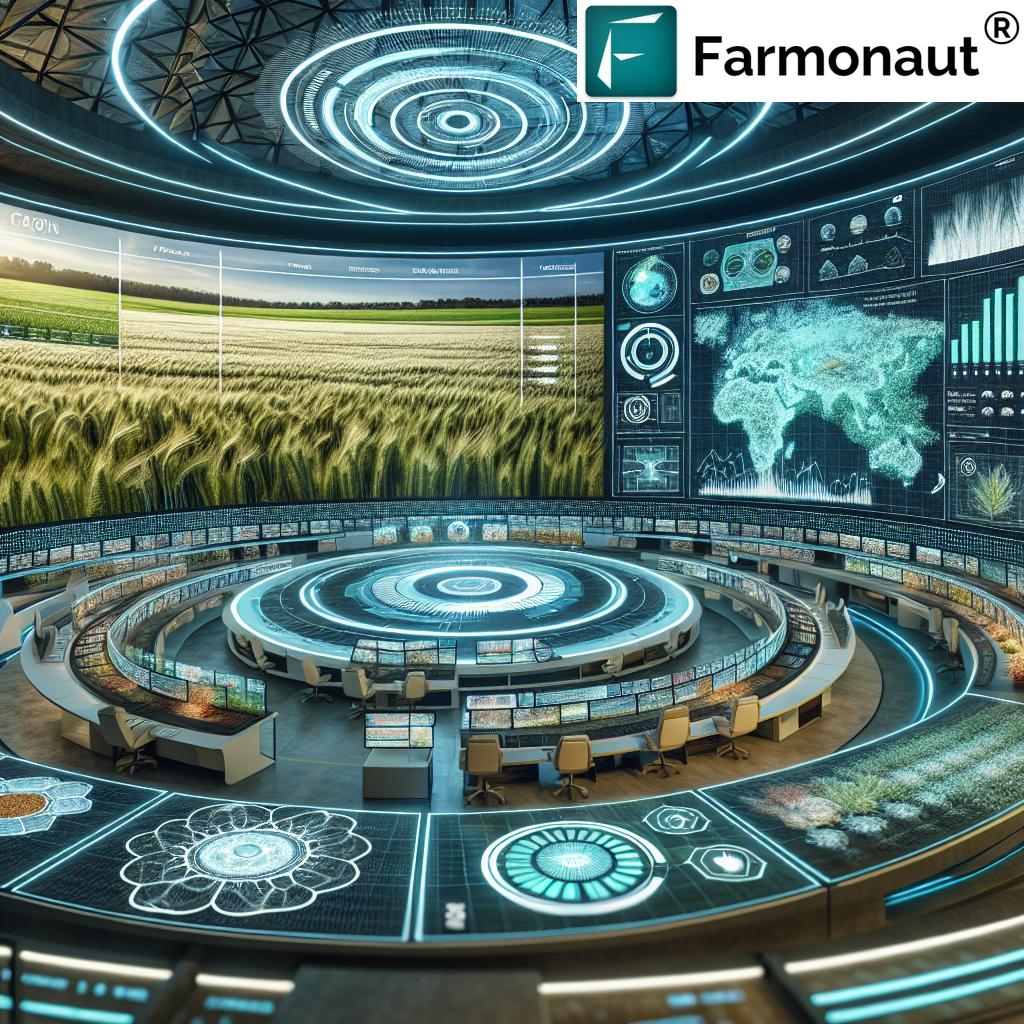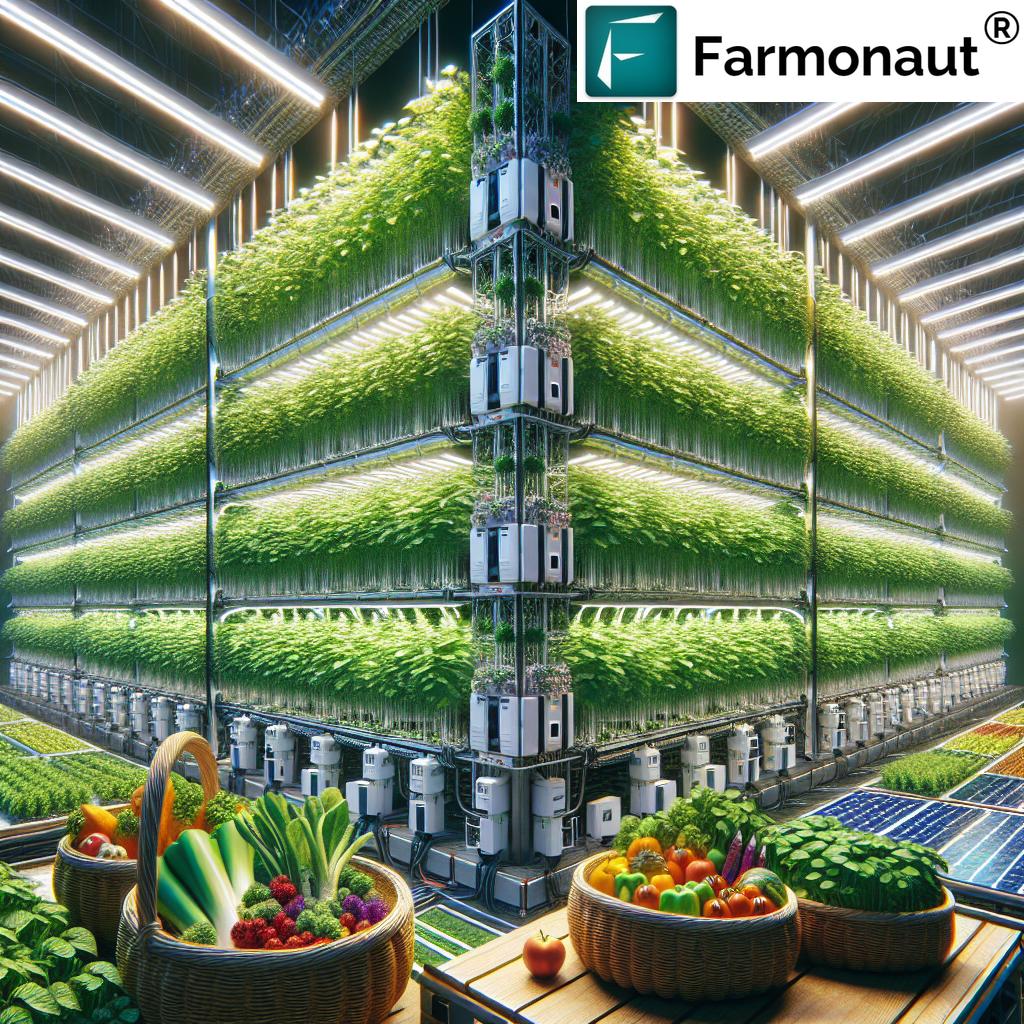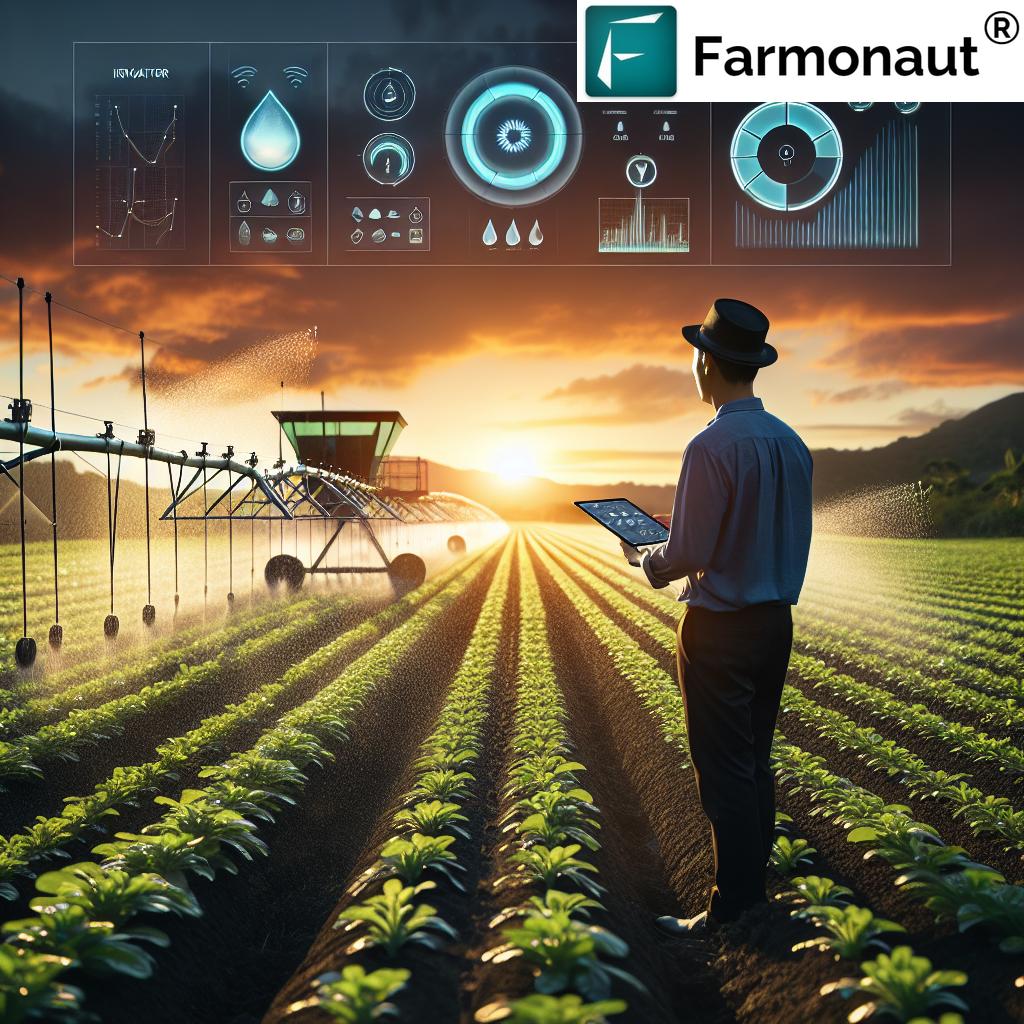Buy Advanced Pollination Methods of Pear Trees: Top Products, Technologies, and Services in 2025
Introduction: The Changing Face of Pear Pollination
In the realm of modern fruit agriculture, advanced pollination methods for pear trees are rapidly emerging as critical determinants of higher orchard yield, improved fruit quality, and sustainability. Traditionally, pear trees have relied on the natural activity of pollinators—mostly bees—for successful fruit set. However, evolving agricultural challenges like declining bee populations, shifting climate patterns, and the urgent demand for efficient, scalable production solutions are fundamentally reshaping orchard management in 2025 and beyond.
In this detailed guide, we explore the top products, technologies, and services in the advanced pollination methods for pear trees market. We cover the full landscape—from automated drones and biostimulants to satellite-driven monitoring platforms like Farmonaut—that’s transforming the future of pear orchard productivity worldwide.
“In 2025, over 60% of commercial pear orchards will adopt advanced pollination technologies for improved yield.”
Understanding Advanced Pollination Methods for Pear Trees
Pollination is a biological process—enabled by the movement of pollen grains from the male anthers to the female stigma of flowers—that leads to fertilization and fruit development. Pear trees (Pyrus spp.) are typically known for their self-incompatibility, meaning that they require cross-pollination from different cultivars to achieve successful fruit set.
Advanced pollination methods of pear trees go far beyond traditional means. These innovative technologies and biological enhancements are designed to boost efficiency, consistency, and resilience—addressing key challenges like pollinator decline and labor shortages, and improving the overall sustainability and profitability of orchard management.
- Mechanized and Automated Pollination: Use of drones, electrostatic devices, or pollen blowers to transfer pollen with high precision.
- Managed Pollinator Colonies: Commercial deployment of managed bee colonies or specialized pollinators tailored to pear crop needs.
- Biological/ Biochemical Products: Application of biostimulants, microbial enhancers, or floral attractants to improve pollen viability and fruit set.
- Synthetic Pollen Substitutes: Lab-developed or synthetic products that mimic natural pollen, often used when natural pollinator populations are low or environmental conditions are suboptimal.
- Satellite & IoT Monitoring: Precision tracking of flowering, weather, and pollination conditions to optimize deployment of advanced methods.
Current Challenges in Traditional Pollination for Pear Orchards
Despite being the backbone of fruit cultivation for decades, traditional pollination methods for pear trees now face several critical challenges:
- Declining Bee Populations: Habitat loss, widespread pesticide use, monocultures, and climate change have severely impacted natural pollinator activity, threatening yield consistency and crop reliability.
- Short Flowering Window: Pear trees have a limited pollination period, making the timing of manual pollination labor-intensive and risky—especially with unpredictable weather.
- Labor Shortages and High Costs: Manual pollination is increasingly expensive and unreliable, especially on large orchards or in regions with scarce skilled labor.
- Yield and Quality Issues: Inconsistent pollination results in variable fruit set rates, uneven fruit size, and lower economic returns.
In response to these issues, advanced pollination methods of pear trees companies are bringing forth a new wave of technological products and services to ensure optimal yield and orchard sustainability in 2025.
Top Advanced Pollination Methods of Pear Trees Companies and Products 2025
2025 marks an era where disruptive companies compete to offer the most effective, scalable, and user-friendly advanced pollination methods of pear trees products and services. In this section, we review what’s available:
- Automated Pollination Drones
- How they work: Drones equipped with precision pollen dispensers fly over orchards, delivering pollen directly to each blossom, ensuring even coverage regardless of weather.
- Benefits: Reduce labor costs, enable pollination even in adverse conditions, and can be scheduled via satellite/GIS data for optimal timing.
- Leading brands: Robollect, Tevel Aerobotics, DropCopter, and others occupy this growing market niche, each offering varying scales for both small and large orchards.
- Mechanized Pollination Equipment (Blowers, Electrostatic Applicators, Handheld Devices)
- How they work: Devices blow or electrically deposit collected or synthetic pollen onto flowers in rows quickly.
- Benefits: Convenient for difficult terrain; effective in orchards of all sizes, especially in regions with unpredictable bee activity.
- Notable technologies: FruitTech PolliMax Blower, AgriElectro Pollen Applicator.
- Managed Pollinator Services
- How they work: Specialized companies supply healthy bee colonies or alternative pollinators, monitor health, and move hives in/out as needed for peak flowering.
- Benefits: Reduces risk of local pollinator decline, ensures reliable pollination, easy to scale.
- Specialized services: BeeTrue, PolliNation Pro.
- Biological & Synthetic Pollination Products
- How they work: Application of biostimulants, microbial enhancers, and floral attractants to improve pollen viability and attract natural pollinators.
- Benefits: Enhance natural processes, increase fertilization rates, and can be paired with mechanized/automated methods.
- Popular products: PollenBoost Ultra, SynPoll Substitutes, MycoEnhance BioBlend.
- Integrated Satellite & IoT Monitoring Platforms
- How they work: Satellite and in-orchard sensors combine to monitor flowering stages, environmental conditions, and pollination activity.
- Benefits: Data-driven decisions, precise scheduling, integration with drones for targeted pollination.
- Platform example: Satellite apps like Farmonaut give real-time field monitoring, AI-driven advisory, and resource management for peak pollination efficiency.
Did you know? “Automated pollination devices can increase pear fruit set rates by up to 35% compared to traditional hand pollination.”
Comparative Product/Technology Overview Table: Advanced Pollination Methods of Pear Trees Products (2025)
| Pollination Method/Technology Name | Product/Service (Brand) | Estimated Yield Increase (%) | Sustainability Impact | Technology Type | Cost Estimate (USD/acre) | User-Friendliness (Easy-Advanced) | Availability (Regions/Online) |
|---|---|---|---|---|---|---|---|
| Automated Pollination Drones | Robollect, DropCopter | 25–30% | Up to 20% water usage reduction, less pesticide need | Drones; Precision AI | $300–$400 | Intermediate | North America, Europe, Online |
| Mechanized Pollination Blowers | FruitTech PolliMax | 18–22% | Reduces chemical inputs, energy efficient | Mechanical/Blower | $70–$120 | Easy | Global |
| Managed Pollinator Colonies | BeeTrue Hive Service | 22–28% | Promotes biodiversity, bee population health | Biological (Bees, Colonies) | $50–$95 | Easy | North America, EU, Asia |
| Biostimulants & Microbial Enhancers | PollenBoost Ultra, MycoEnhance BioBlend | 13–19% | Improves soil, reduces synthetic fertilizer dependence | Biological/Chemical | $25–$70 | Easy | Global, Online |
| Synthetic Pollen Substitutes | SynPoll | Up to 15% | Enables pollination without bees, can mitigate complete pollinator loss | Chemical/Biotech | $80–$120 | Intermediate | Specialty suppliers, Online |
| Satellite & IoT Monitoring Platforms | Farmonaut (Monitoring, AI Advisory) | Data-driven increases of 5–12% | Brings resource efficiency, enables precision input use | Satellite, AI, Remote Sensing | Subscription-based (see Farmonaut pricing) | Easy–Advanced (modular) | Worldwide (Web, App, API) |
Tip: This comparison helps growers choose the right advanced pollination methods of pear trees products for their local conditions, budget, and farm size.
Technological and Biological Innovations Transforming Pear Orchards in 2025
Automated Pollination Drones: The Future of Precision Pollination
Leading advanced pollination methods of pear trees companies are deploying aerial drones equipped with AI and multisensor platforms to automate the laborious process of pollination. These drones:
- Fly pre-programmed routes guided by satellite data and precision mapping.
- Dispense measured amounts of pollen directly onto each blossom, even at dawn or dusk.
- Collect data for real-time orchard monitoring and yield prediction.
Result: Robust yield gains in both variable weather and regions with weak bee populations.

Use Farmonaut’s large scale farm management tools to integrate satellite data for precision planning of drone pollination schedules.
Mechanical Blowers and Handheld Applicators: Scalable, Affordable Options
From portable backpack pollinators for small plots to tractor-mounted blowers for extensive orchards, mechanized pollination is beloved for:
- Speed: Rapid, uniform pollen delivery even in difficult terrain.
- Ease of use: Minimal technical training required, easy integration into existing farm systems.
- Cost-effectiveness: Low initial investment and easy maintenance.
Biostimulants, Microbial Enhancers, and Synthetic Substitutes
Innovative advances in agricultural biology are empowering growers to enhance pollen viability and floral attractiveness naturally:
- Biostimulants: Formulations like PollenBoost Ultra can increase pollen germination rates and improve cross-fertilization.
- MycoEnhance BioBlends: Utilize beneficial microbes to invigorate floral biology and attract both bees and alternative pollinators.
- Synthetic Substitutes: When natural pollen is scarce, lab-developed options like SynPoll fill the gap, ensuring fruit set consistency.
Satellite Monitoring, AI, and IoT Devices: Data-Driven Pollination Management
Satellite platforms and IoT—such as those provided by Farmonaut—empower orchard managers to:
- Monitor canopy health and flowering progress in real time via remote satellite imaging (NDVI, crop stage differentiation).
- Integrate AI-based recommendations for optimal pollination scheduling.
- Use environmental and microclimate data to trigger automated pollination actions, reducing waste, boosting efficiency, and maximizing outcomes.

With Farmonaut’s fleet management tools, orchards can synchronize ground machinery and drones for thorough, efficient pollination coverage.
Farmonaut: Satellite Insights for Advanced Pear Orchard Management
At Farmonaut, we believe in making cutting-edge technology accessible to all orchard managers. While we do not develop advanced pollination devices or supply biological products, our role in this ecosystem is vital:
Farmonaut’s platform uses multispectral satellite imagery, AI-driven analytics, and real-time field monitoring tools to:
- Map bloom stages and pollination windows for precise resource deployment.
- Track orchard health, crop vigor, and microclimate trends—informing decisions around when and which advanced pollination methods to deploy.
- Integrate with IoT devices and third-party drones for cohesive, data-driven management of flowering and pollination activities across large and small orchards alike.
Our cost-effective digital tools help businesses maximize the ROI from their advanced pollination methods of pear trees investments—by scheduling, monitoring, and reporting on every key step for greater orchard productivity.
Start optimizing your advanced pollination strategy: Download our app to access satellite data, AI advisory, and orchard monitoring tailored for 2025 and beyond.
Advanced Pollination Methods of Pear Trees Service: Customized Solutions for Every Orchard
Many advanced pollination methods of pear trees service providers offer end-to-end packages that combine:
- Orchard Pollination Assessments: Baseline analysis of local pollinator presence, microclimate, and floral stages.
- Implementation and Deployment: On-site setup, device deployment, managed colony introduction, and scheduled field operations.
- Real-Time Monitoring & Adjustment: Ongoing satellite and IoT data input for dynamic scheduling and troubleshooting.
- Advisory & Technical Support: Timely recommendations for switching between mechanized, managed, or biological solutions to maximize fruit set.
Key Service Types:
- Managed Pollinator Rentals: Seasonal contracts for healthy bee or alternative pollinator colonies (e.g., BeeTrue, PolliNation Pro).
- Drones-as-a-Service: Subscription access to professional drone teams and real-time pollination analytics.
- Integrated Crop and Resource Management Platforms: Complete solutions like Farmonaut’s monitoring suite for orchestrating all advanced pollination methods at scale.
Buy Advanced Pollination Methods of Pear Trees: What Growers Should Consider (2025)
- Orchard Size, Terrain, and Crop Variety: Choose solutions that scale (drone fleets for large orchards; mechanized blowers for smaller, uneven plots).
- Local Pollinator Availability: Do you have sufficient bee populations, or are you in a region affected by pollinator decline? Managed colonies or synthetic options may be critical.
- Environmental Conditions & Flowering Window: Integrate real-time weather and flowering data for timing precision (Farmonaut, IoT devices).
- Compatibility: How do new products or mechanisms fit with current orchard management practices, existing machinery, and sustainability goals?
- Cost, ROI, and Sustainability: Consider total lifecycle costs, labor savings, expected yield gains, and environmental impact.
- Vendor Support & Training: Does the advanced pollination methods of pear trees company offer technical support, product demos, or pilot programs? Many do!
Steps to Buy:
- Research trusted companies online (start with product comparison tables and independent reviews).
- Contact local reps for site assessment and demo.
- Use satellite-based platforms like Farmonaut to analyze orchard needs before investing.
Where to buy? Many advanced pollination products are sold direct from manufacturers, agricultural tech suppliers, and increasingly via online agri-marketplaces. For service-based options (like drones-as-a-service), booking is typically done through provider websites or custom contracts.
Don’t forget traceability! Blockchain-based traceability via Farmonaut can help you certify your advanced pollination practices for supply chain transparency and quality assurance.
“Automated pollination devices can increase pear fruit set rates by up to 35% compared to traditional hand pollination.”
Farmonaut Key Tools & Useful Links for Pear Growers in 2025
-
 Farmonaut Field Monitoring App
Farmonaut Field Monitoring App
- Farmonaut API: Integrate satellite crop monitoring into your orchard dashboard
- API Developer Docs – Learn to plug custom pear pollination data streams into your systems
- Calculate and monitor pear orchard carbon footprint for sustainability compliance
- Blockchain Traceability – Prove your advanced pollination products/services provenance
- Farmonaut Crop and Orchard Advisory Services
Frequently Asked Questions (FAQ) – Advanced Pollination Methods of Pear Trees
What are advanced pollination methods for pear trees?
Advanced pollination methods of pear trees include the use of mechanized tools (e.g., blowers, drones), biological enhancements (managed bee colonies, microbial biostimulants), and digital monitoring (satellite, AI, IoT) to increase fruit set, quality, and yield—especially when traditional, natural pollination is insufficient.
How do advanced pollination methods improve orchard yield?
They boost pollination coverage, ensure pollen transfer during critical flowering windows, compensate for labor shortages, and enhance pollinator efficiency—leading to more uniform and higher-quality pears.
Can I use advanced pollination methods if my orchard is small?
Yes. Many products are scalable and customizable: mechanized applicators suit small plots; managed bee services or bioproducts can be adapted to any orchard size.
How do drone-based pollination services work?
Automated drones use GPS, onboard AI, and precision pollen dispensers to navigate orchards and deliver pollen directly to blossoms, optimizing for weather and flowering timing.
Is Farmonaut an advanced pollination product provider?
No, we at Farmonaut do not manufacture pollination devices or supply biological inputs. Our services focus on satellite and AI-based monitoring, advisory, and resource management—helping pear growers time and optimize their advanced pollination strategies.
What’s the ROI on buying advanced pollination methods?
Yield increases of 15–35% are common. ROI depends on orchard size, baseline pollination levels, and chosen technologies or products. Many growers recoup costs within 1–2 harvests due to improved yield and marketable fruit quality.
Conclusion: Pear Orchard Productivity Reimagined with Advanced Pollination Methods
The adoption of advanced pollination methods of pear trees in 2025 is not just a technological trend—it’s an economic and agronomic necessity. With growers facing declining natural pollinator populations, higher labor costs, and the need for sustainable intensification, the move towards automated, managed, and biologically enhanced pollination strategies is reshaping global pear orchard management.
Products like drones, mechanized applicators, biostimulants, and synthetic pollen—supported by data-driven platforms such as Farmonaut—are empowering orchards of every size and region to maximize yield, resilience, and profitability. The integration of real-time monitoring, AI, and blockchain traceability further enhances transparency and resource efficiency, future-proofing pear production.
As the market for advanced pollination methods of pear trees products and services rapidly expands, growers who embrace these modern, scalable solutions will lead the way in transforming orchard productivity and sustainability in 2025—and well into the future.












